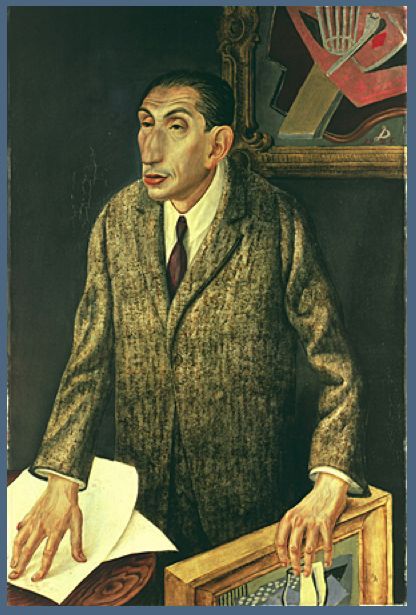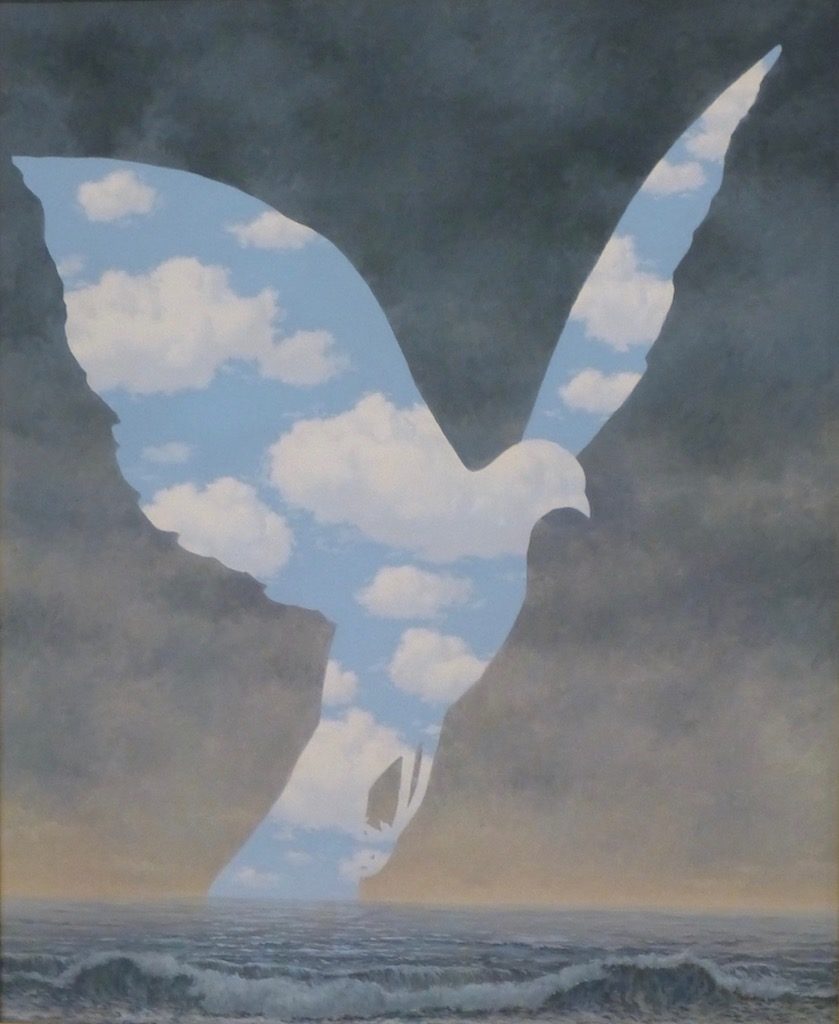THE ECONOMY OF MAGRITTE
Rene Magritte (1898 – 1967) was an adroit painter, but his best work is not given to painterly luxuriance. His images revolve around their surrealistic joke, and the more simply and directly the point is made, the better. Imagine “The Son of Man” as richly composed and modeled as “Alfred Flechtheim.” The effect would be absurd rather than surrealistic.


Which is not to say that his works are not well painted. They are. Both day and night parts of “The Dominion of Light” are sensitively done. There are rather a lot of clouds in the sky, to make the point that it’s full day, and not dawn, and houses and trees are lively, albeit low key. But the trees, especially, are kept dark, strong, and simple, for contrast – lively silhouettes, but nowhere near as interesting as they would be if Magritte were not holding them in.

Similarly, the two skies in “The Grand Family” are each kept simple so that the grand point, the bird, doesn’t get lost.

The works shown here are included in a show of Magritte’s work currently at the San Francisco Museum of Modern art. It includes these and some other wonderful pieces together with a larger number that are pretty humdrum. The problem with works that depend on a joke is that once you’ve seen it, repetitions and slight variations have little to add, and incite comparisons of quality in which most examples can only disappoint.